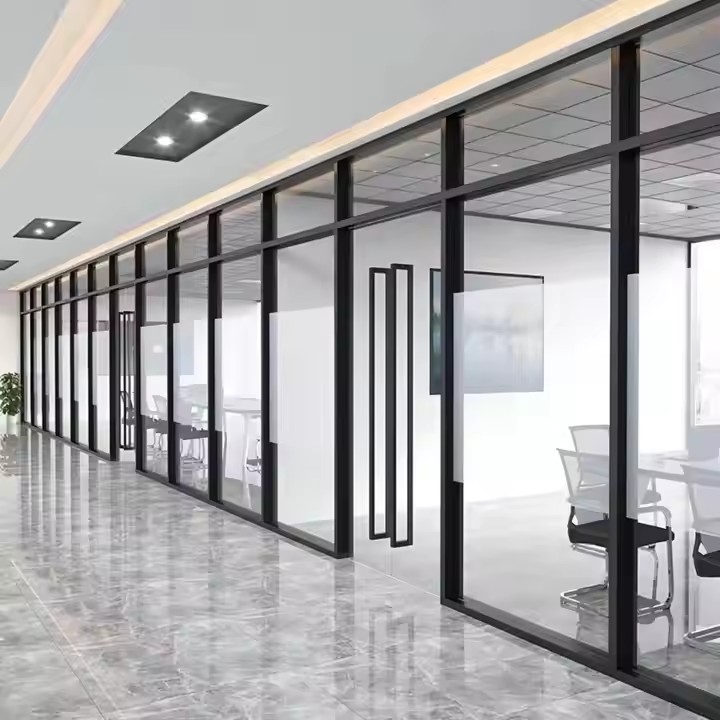I. Heritage Materials: Recreating Classical Charm Through Authentic Texture
These materials serve as the “soul carriers” of classical Chinese doors and windows, intrinsically tied to the cultural DNA of traditional architecture. They are commonly used in spaces that demand a strong retro atmosphere, such as courtyard houses, classical gardens, and heritage-style guesthouses. Their key strength lies in conveying the Eastern aesthetic of “harmony between man and nature” through natural textures and tactile warmth, though craftsmanship is often needed to offset performance limitations.
- Solid Wood: The “Native Material” of Chinese Doors and Windows
Wood has always been central to traditional Chinese fenestration, valued for its warmth and natural grain, which align with the Chinese cultural preference for timber.
Hardwoods (e.g., rosewood, padauk, red sandalwood): Dense, finely grained, and naturally glossy — these premium woods were favored in grand residences. Their structural integrity and fine texture make them ideal for intricate carvings like vine motifs or dragon clouds. Due to high cost and scarcity, modern use is typically limited to accents such as frames or carved inlays.

Softwoods (e.g., fir, pine, camphor): Softer, easier to process, and more economical — these were common in vernacular architecture. Fir resists moisture and suits humid southern climates; camphor wood is insect-repellent and ideal for bookcases or wardrobes. In modern applications, softwood is often carbonized (heat-treated to remove moisture and resin), improving its resistance to warping and decay. Finishing is done with wood wax oil rather than lacquer to preserve its breathability.
Application Logic: The beauty of solid wood lies in its “living quality” — its grain becomes richer over time. For example, aged elm doors develop a deep amber sheen after 5–10 years of use, creating a patina of time that no synthetic material can replicate.
- Stone: Creating Gravitas Through Heaviness and Solidity
Stone is commonly used for peripheral structures such as window frames or door columns in traditional architecture. Its durability and symbolic permanence make it ideal for courtyards and ancestral halls.
Bluestone: Gray-blue in color and fine in texture, bluestone is widely used in Jiangnan gardens. For instance, a flower window near the “Guanyun Peak” in Suzhou’s Lingering Garden features crabapple carvings in bluestone. Over time, rain smoothens its surface, enhancing its poetic, ink-painting-like ambiance.
Han White Jade (Hanbaiyu): Prized for its milky-white hue and delicate grain, this stone is often seen in royal architecture or upscale Chinese interiors. It can be sliced into thin panels for decorative use — such as carved inserts in lattice panel doors — and paired with dark wood for striking black-and-white contrast.
Application Logic: The “coldness” of stone can be moderated by pairing — such as inlaying wooden moldings on the inner edge of stone window frames, or engraving shallow relief motifs (like fret patterns or cloud designs) to enhance tactile richness. Given stone’s heavy weight, structural calculations must ensure sufficient load-bearing capacity.
- Brass and Iron: Accentuating with Metallic Texture
In traditional architecture, metals served as auxiliary materials that balanced the softness of wood with strength and functionality — used in hinges, locks, and decorative fasteners.
Brass: With its golden luster and malleability, brass is a staple in traditional metalwork. It appears in lattice door fittings, window grille joints, and ornamental faceplates. Over time, brass oxidizes into a patinated green-blue tone, giving it an inherently antique character.
Cast Iron: Known for its strength and security, cast iron suits courtyard gates and street-facing windows. It can be molded into simplified traditional patterns (e.g., swastika or bamboo joints), then framed with wood to combine classical elegance and modern safety.
Application Logic: Metal should be “used sparingly but precisely” — such as embedding thin brass strips at lattice intersections to reinforce joints and create visual highlights; or replacing modern handles with traditional copper rings, where the knock evokes a ritualistic sensory experience.

II. Modern Hybrid Materials: Technological Solutions for Tradition and Performance
While traditional materials offer aesthetic value, they often fall short in durability, maintenance, and cost-efficiency. Modern composite materials, empowered by new technology, preserve the tactile appeal of tradition while overcoming functional limitations. These are ideal for contemporary residences and commercial environments with higher performance requirements.
- Wood-Aluminum Composites: Blending the Beauty of Wood with the Strength of Aluminum
Currently the most popular material for Chinese-style doors and windows, wood-aluminum composites use aluminum for internal structural support and real wood veneer for the exterior, effectively solving warping and moisture issues associated with solid wood.
Advantages: The aluminum frame offers wind and corrosion resistance — perfect for high-rise buildings. The outer wood veneer (e.g., walnut, teak) replicates traditional aesthetics and can be CNC-milled to reflect classic patterns like ice-cracks or fretwork. Surface finishes can be optimized for insulation, making them suitable for northern heating zones.

